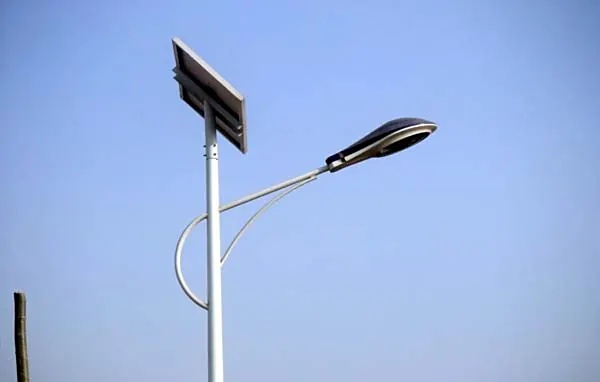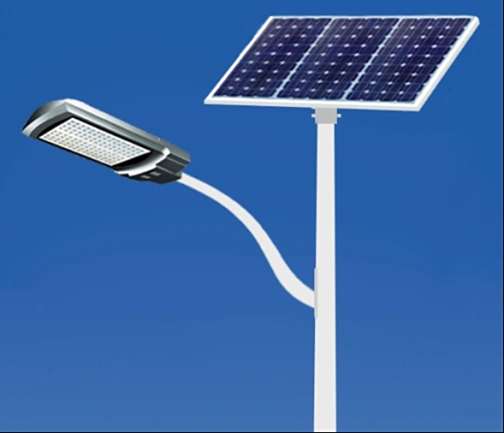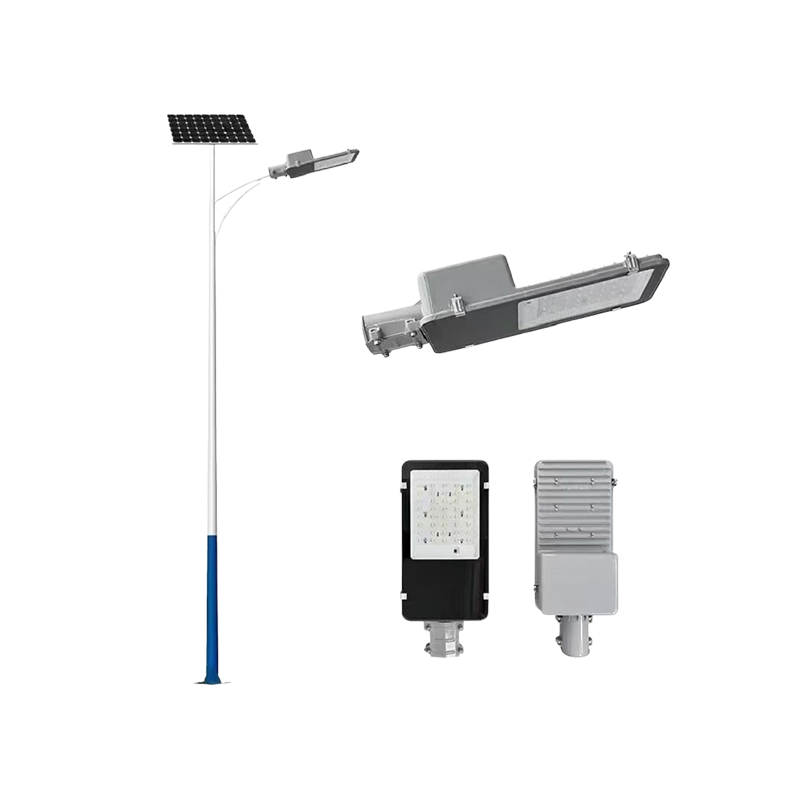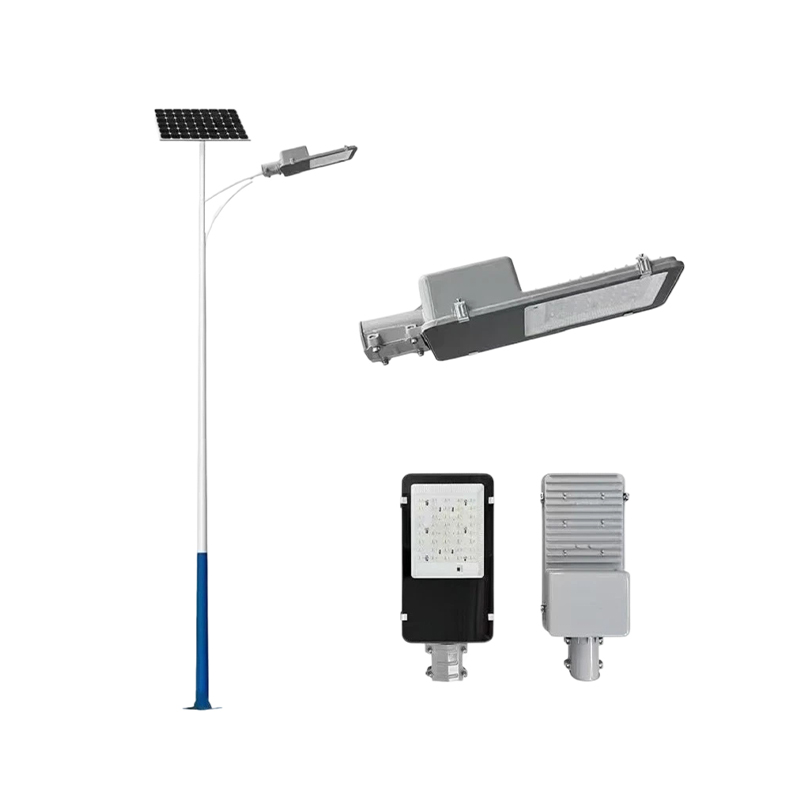Solar Street Lights: Leveraging Natural Light to Reduce the Burden of Traditional Energy
Release Time : 2025-11-10
Driven by the escalating global climate crisis and accelerated energy transition, renewable energy is reshaping infrastructure at an unprecedented pace. Among these technologies, solar street lights, a prime example of the integration of distributed photovoltaic technology and smart lighting, are moving from the outskirts of cities to the center stage of global public lighting thanks to their core advantages of "zero grid dependence, zero carbon emissions, and low operation and maintenance costs." They not only illuminate the darkness in areas without electricity but also, with their increasingly mature technology and superior product quality, have become a pragmatic choice for governments, communities, and businesses worldwide to practice sustainable development.
In recent years, international demand for high-quality solar street lights has continued to rise. More than 65 countries worldwide have incorporated solar street lights into national-level rural electrification or smart city projects, with an average annual deployment exceeding 8 million units. Particularly in sub-Saharan Africa, Southeast Asia, and Latin America, solar street lights are replacing diesel generators and inefficient incandescent bulbs on a large scale, significantly improving the nighttime safety and quality of life for hundreds of millions of people.

1. Technological iteration drives a leap in reliability, breaking the stereotype of "cheap and low-quality"
In the past, some low-priced products were heavily criticized for short battery life and insufficient power supply in cloudy or rainy weather. Today, leading brands in the industry have fully adopted high-energy-density lithium iron phosphate batteries, high-efficiency monocrystalline PERC solar panels, and IP66-rated fully sealed structures to ensure long-term stable operation in extreme environments. In 2024, in a pilot project of new solar street lights in the arid region of northern Kenya, piloted by the United Nations Development Programme, the equipment maintained 6 hours of illumination after 12 consecutive days of cloudy or rainy weather, achieving a 99.2% illumination rate, which was highly recognized by the local community. Such cases mark the transition of solar street lights from "emergency lighting" to "mainstream lighting."
2. Intelligent management empowers efficient operation and maintenance and resource optimization
The new generation of solar street lights generally integrates IoT modules and remote monitoring platforms. Managers can view the working status, remaining power, and fault warnings of each light in real time through the cloud system, and remotely adjust brightness strategies or group control. In the ecotourism area of Bali, Indonesia, the local government has deployed a smart solar street light system that automatically adjusts nighttime illumination based on pedestrian density—bright at full brightness during peak tourist seasons and reduced to 30% brightness during low-traffic periods at night, achieving an average annual energy saving rate of 22%. This system also effectively reduces light pollution and protects the habitats of local nocturnal wildlife.

For developing countries facing financial constraints, the life-cycle cost advantage of solar street lights is highly attractive. A 2023 World Bank study showed that in areas without grid coverage, the overall cost of installing a traditional municipal street light system is 3.2 times that of solar street lights. A community in the suburbs of Manila, Philippines, after introducing solar street lights through a public-private partnership, not only saved approximately $150,000 in annual electricity costs but also used the saved funds to build a children's playground and a community health station, effectively "using the saved electricity to benefit people's livelihoods."

4. Supporting Climate Action and Fulfilling Global Carbon Reduction Commitments
Each 60W solar street light can reduce carbon dioxide emissions by approximately 2.8 tons over its 10-year lifespan. If 30% of the world's public lighting systems were replaced with solar power, the annual carbon reduction would be equivalent to closing 20 medium-sized coal-fired power plants. In 2024, the EU's Green Partnership Initiative donated 50,000 smart solar street lights to Morocco as part of its Nationally Determined Contribution (NDC). Around the same time, Costa Rica announced it would fully adopt solar lighting for its national park trails to fulfill its 2050 carbon neutrality commitment. These actions demonstrate that solar street lights have become a micro-level pillar in global climate governance.

Solar street lights, seemingly just a lamp standing on a street corner, are actually a microcosm of the democratization, intelligentization, and humanization of clean energy. They do not rely on complex power grids, yet they illuminate hope; they do not consume fossil fuels, yet they safeguard safety; they are unassuming, yet they silently support countless communities towards a green future. With continuous breakthroughs in materials science, energy storage technology, and digital management, solar street lights will inevitably grow from an "alternative option" to the mainstream paradigm of global public lighting, truly realizing "borrowing natural light to relieve the burden of energy," allowing every corner of the earth to peacefully enter the night in sustainable light.
In recent years, international demand for high-quality solar street lights has continued to rise. More than 65 countries worldwide have incorporated solar street lights into national-level rural electrification or smart city projects, with an average annual deployment exceeding 8 million units. Particularly in sub-Saharan Africa, Southeast Asia, and Latin America, solar street lights are replacing diesel generators and inefficient incandescent bulbs on a large scale, significantly improving the nighttime safety and quality of life for hundreds of millions of people.

1. Technological iteration drives a leap in reliability, breaking the stereotype of "cheap and low-quality"
In the past, some low-priced products were heavily criticized for short battery life and insufficient power supply in cloudy or rainy weather. Today, leading brands in the industry have fully adopted high-energy-density lithium iron phosphate batteries, high-efficiency monocrystalline PERC solar panels, and IP66-rated fully sealed structures to ensure long-term stable operation in extreme environments. In 2024, in a pilot project of new solar street lights in the arid region of northern Kenya, piloted by the United Nations Development Programme, the equipment maintained 6 hours of illumination after 12 consecutive days of cloudy or rainy weather, achieving a 99.2% illumination rate, which was highly recognized by the local community. Such cases mark the transition of solar street lights from "emergency lighting" to "mainstream lighting."
2. Intelligent management empowers efficient operation and maintenance and resource optimization
The new generation of solar street lights generally integrates IoT modules and remote monitoring platforms. Managers can view the working status, remaining power, and fault warnings of each light in real time through the cloud system, and remotely adjust brightness strategies or group control. In the ecotourism area of Bali, Indonesia, the local government has deployed a smart solar street light system that automatically adjusts nighttime illumination based on pedestrian density—bright at full brightness during peak tourist seasons and reduced to 30% brightness during low-traffic periods at night, achieving an average annual energy saving rate of 22%. This system also effectively reduces light pollution and protects the habitats of local nocturnal wildlife.

3. Economic Advantages Emerge, Driving Green Infrastructure Development in Developing Countries
For developing countries facing financial constraints, the life-cycle cost advantage of solar street lights is highly attractive. A 2023 World Bank study showed that in areas without grid coverage, the overall cost of installing a traditional municipal street light system is 3.2 times that of solar street lights. A community in the suburbs of Manila, Philippines, after introducing solar street lights through a public-private partnership, not only saved approximately $150,000 in annual electricity costs but also used the saved funds to build a children's playground and a community health station, effectively "using the saved electricity to benefit people's livelihoods."

4. Supporting Climate Action and Fulfilling Global Carbon Reduction Commitments
Each 60W solar street light can reduce carbon dioxide emissions by approximately 2.8 tons over its 10-year lifespan. If 30% of the world's public lighting systems were replaced with solar power, the annual carbon reduction would be equivalent to closing 20 medium-sized coal-fired power plants. In 2024, the EU's Green Partnership Initiative donated 50,000 smart solar street lights to Morocco as part of its Nationally Determined Contribution (NDC). Around the same time, Costa Rica announced it would fully adopt solar lighting for its national park trails to fulfill its 2050 carbon neutrality commitment. These actions demonstrate that solar street lights have become a micro-level pillar in global climate governance.

Solar street lights, seemingly just a lamp standing on a street corner, are actually a microcosm of the democratization, intelligentization, and humanization of clean energy. They do not rely on complex power grids, yet they illuminate hope; they do not consume fossil fuels, yet they safeguard safety; they are unassuming, yet they silently support countless communities towards a green future. With continuous breakthroughs in materials science, energy storage technology, and digital management, solar street lights will inevitably grow from an "alternative option" to the mainstream paradigm of global public lighting, truly realizing "borrowing natural light to relieve the burden of energy," allowing every corner of the earth to peacefully enter the night in sustainable light.







